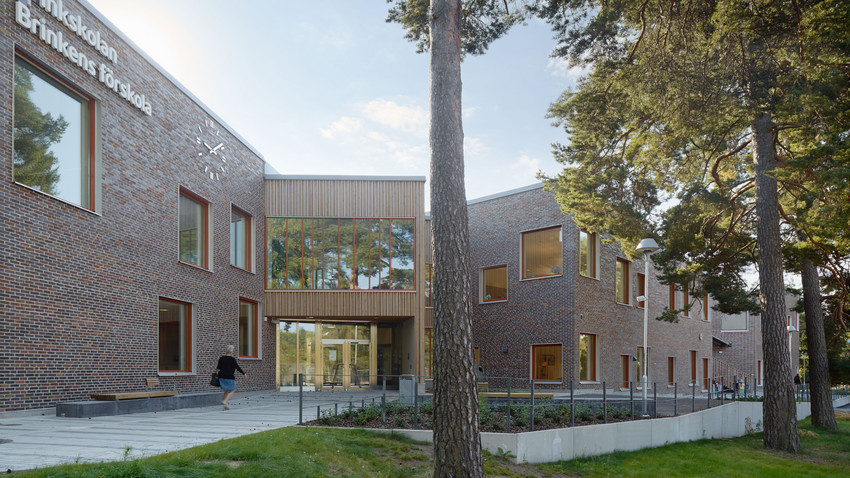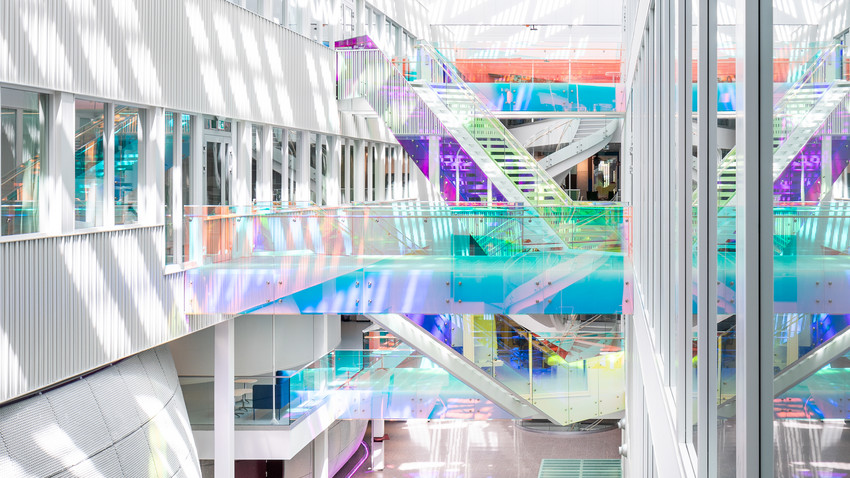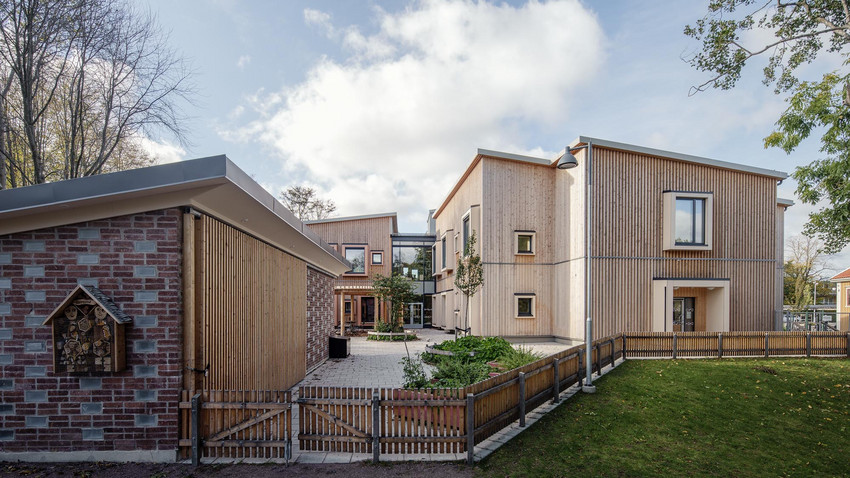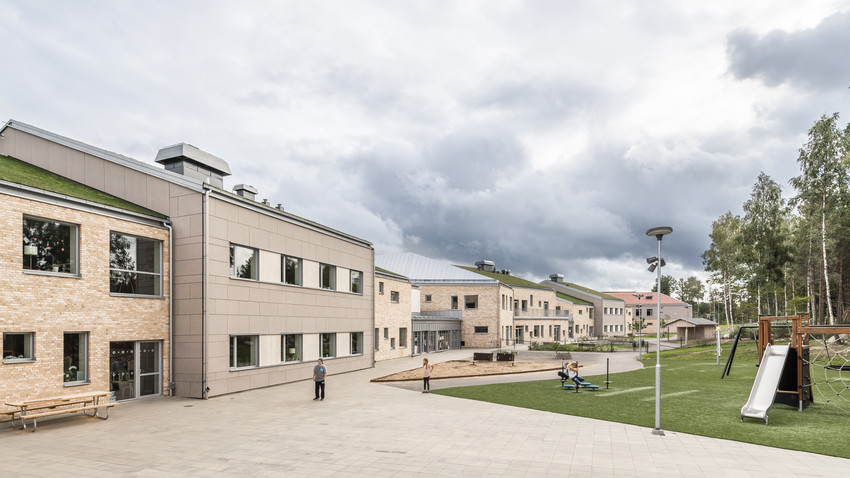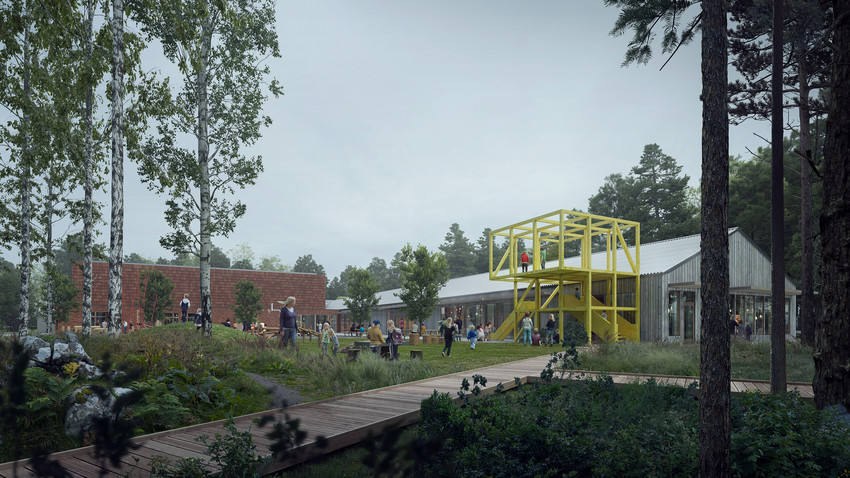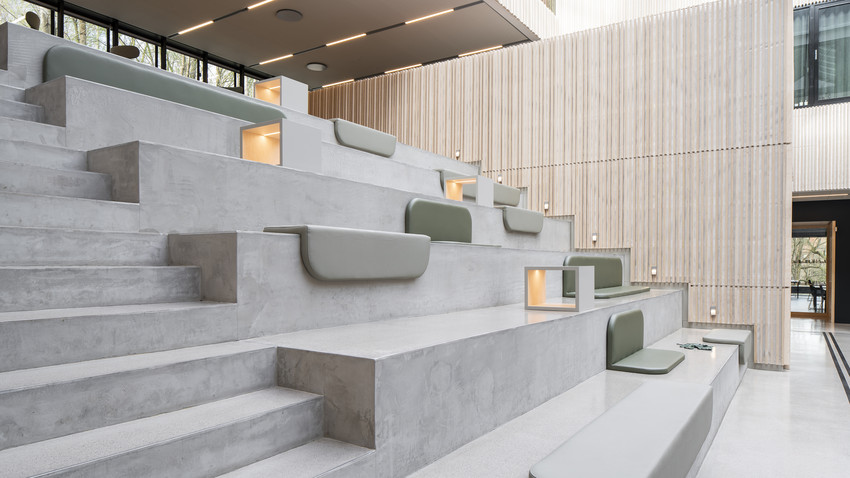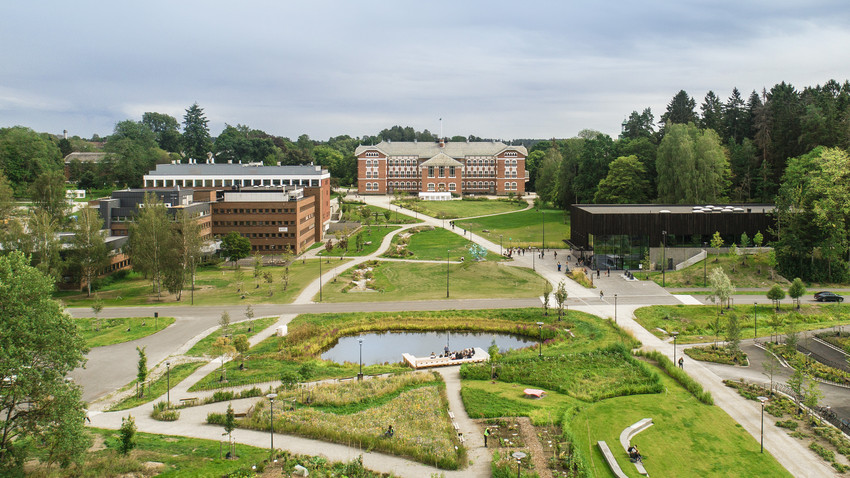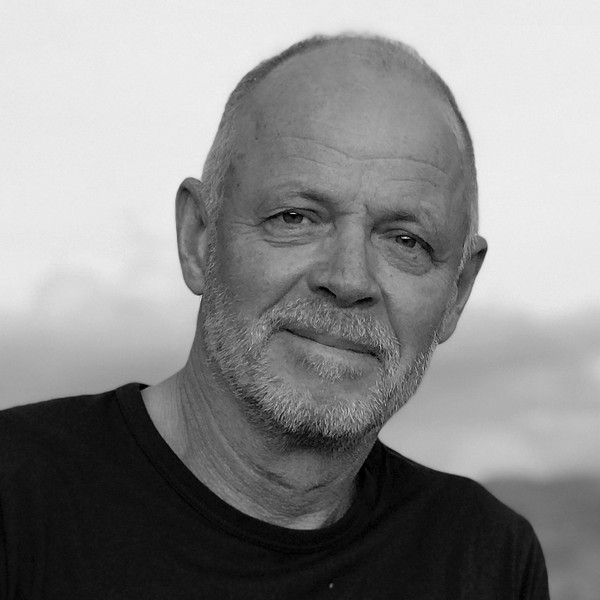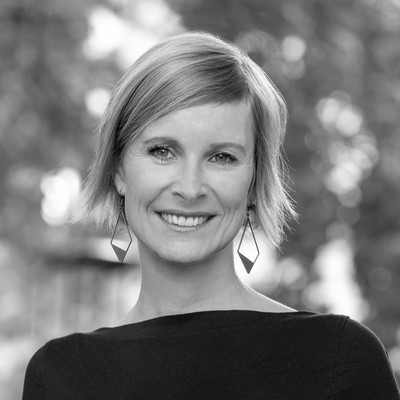Education
It is a great responsibility to design the teaching building of the future, which will both provide prerequisites for learning and at the same time meet requirements for environmental and social sustainability. We have experience with many learning arenas, from kindergartens to schools and universities, many of which have been honoured with important architectural awards.
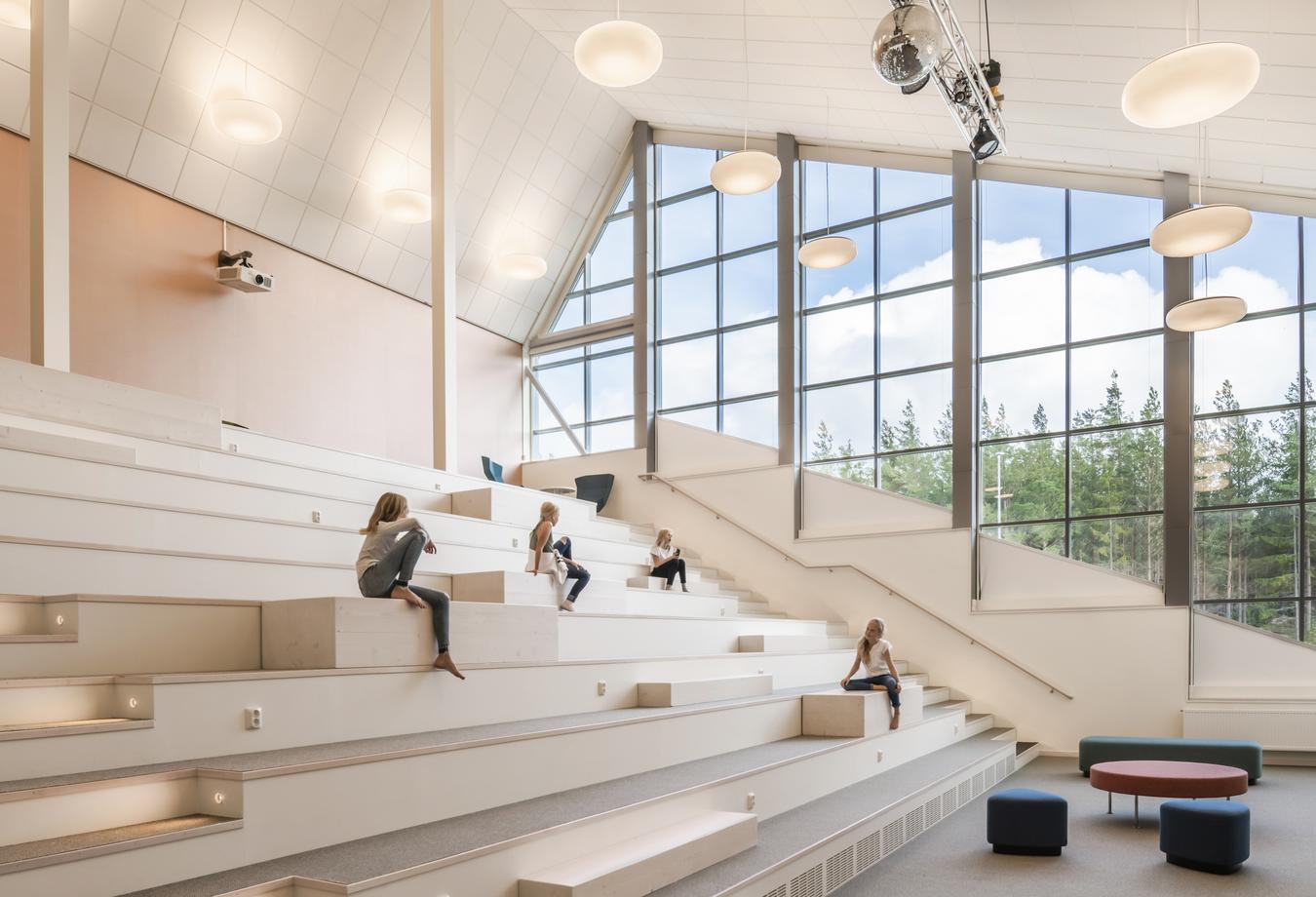
Sjölunda school is designed with a focus on sustainability, modern pedagogy and design. Photo: Hundven-Clements photography
Each mission is unique
All projects start by getting to know the project's goals, needs, and planning prerequisites. The conceptual solution depends on the space of opportunity defined in the interaction process with the client and users. We believe that good architecture gives the desire to learn. Our goal is to create space for learning and inspiration. The school's cultural, social, and practical function in the local community is clarified. At the same time, we must create environments that can be adapted to tomorrow's needs and new forms of learning.
By getting involved already at an early stage, conscious, sustainable goals are set for the project. Our most important social mission is to propose concrete solutions that drive development forward.
Long experience, high competence, and an innovative approach have given LINK a reputation in the first place when it comes to educational buildings. We have built up a solid portfolio within learning arenas through several victories in design and architecture competitions.
Local presence
You will find our 500 employees located in 15 locations in Denmark, Norway, and Sweden. We know local framework conditions, input factors, and pedagogical principles in all three countries. We exchange experience and work-integrated across geography to ensure that we are constantly at the forefront of creating the educational arenas of the future. At the core of our thinking is being close to our customers and offering the competence and capacity that is in demand.
Three basic principles
We have well-established working methods for creating architecture that has a positive effect on the outside world.
Pedagogy
Pedagogical principles are always the basis for a necessary prerequisite. A good result presupposes close interaction and participatory commitment from all stakeholders such as project owners, teachers and pupils/students, and others who will use the school.
Sustainability
Choosing environmentally friendly solutions is essential when we are to create the learning arenas of the future. The schools have a central role in contributing to understanding a sustainable future, which is reflected in the planning process on land use, material use, construction method, and finances. The school should be a model for innovative solutions related to sustainability where passive houses, solid wood, fossil-free construction sites, greenhouse gas accounts, blue roofs with diversion pools, solar parks, and energy wells are significant measures.
Building economics
Financial sustainability means carrying out the project within the established framework. It is often the architect's task to advise on how to determine these frameworks to secure resources to carry out a quality project. We, as planners, have many tools for goal achievement, including within the Smartbygg concept.
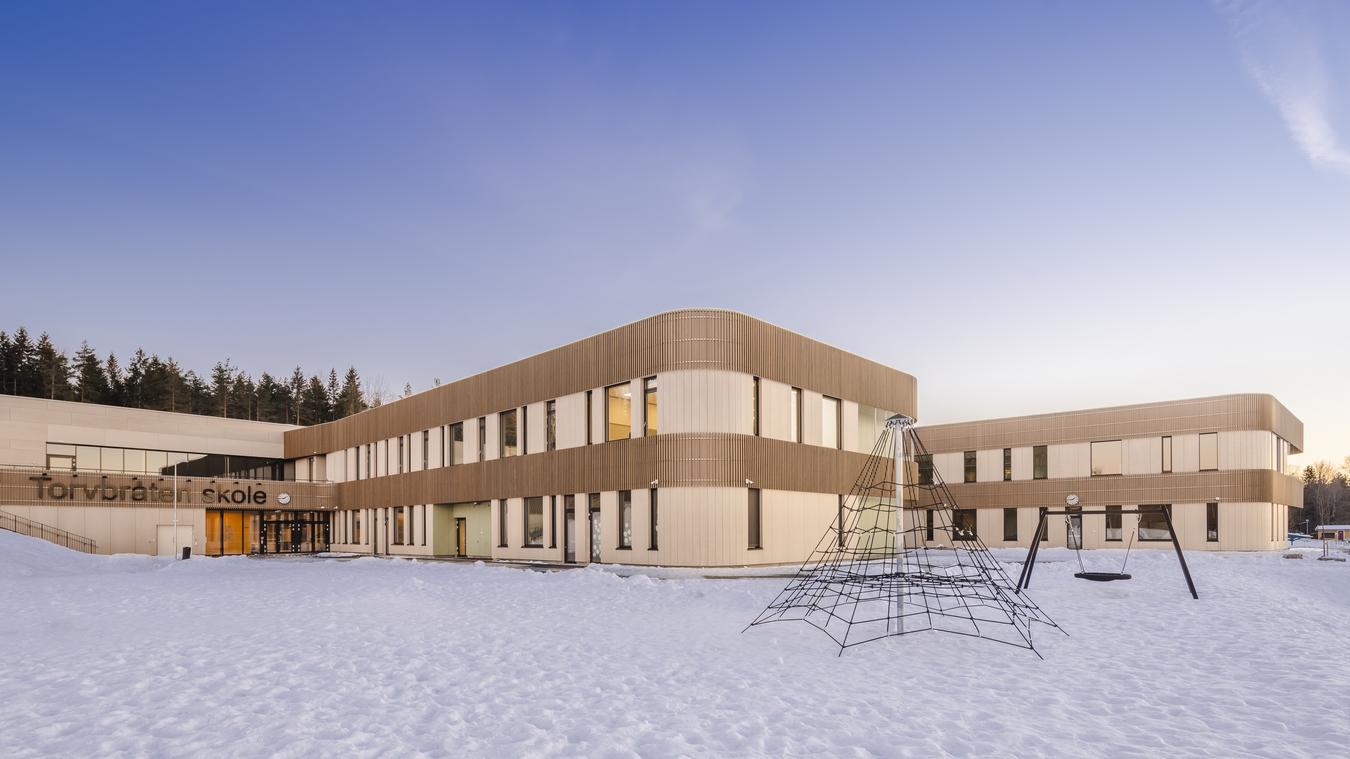
Torvbråten school's location, shape and details are designed with a focus on sustainability and our human needs. Photo: Hundven-Clements Photography
